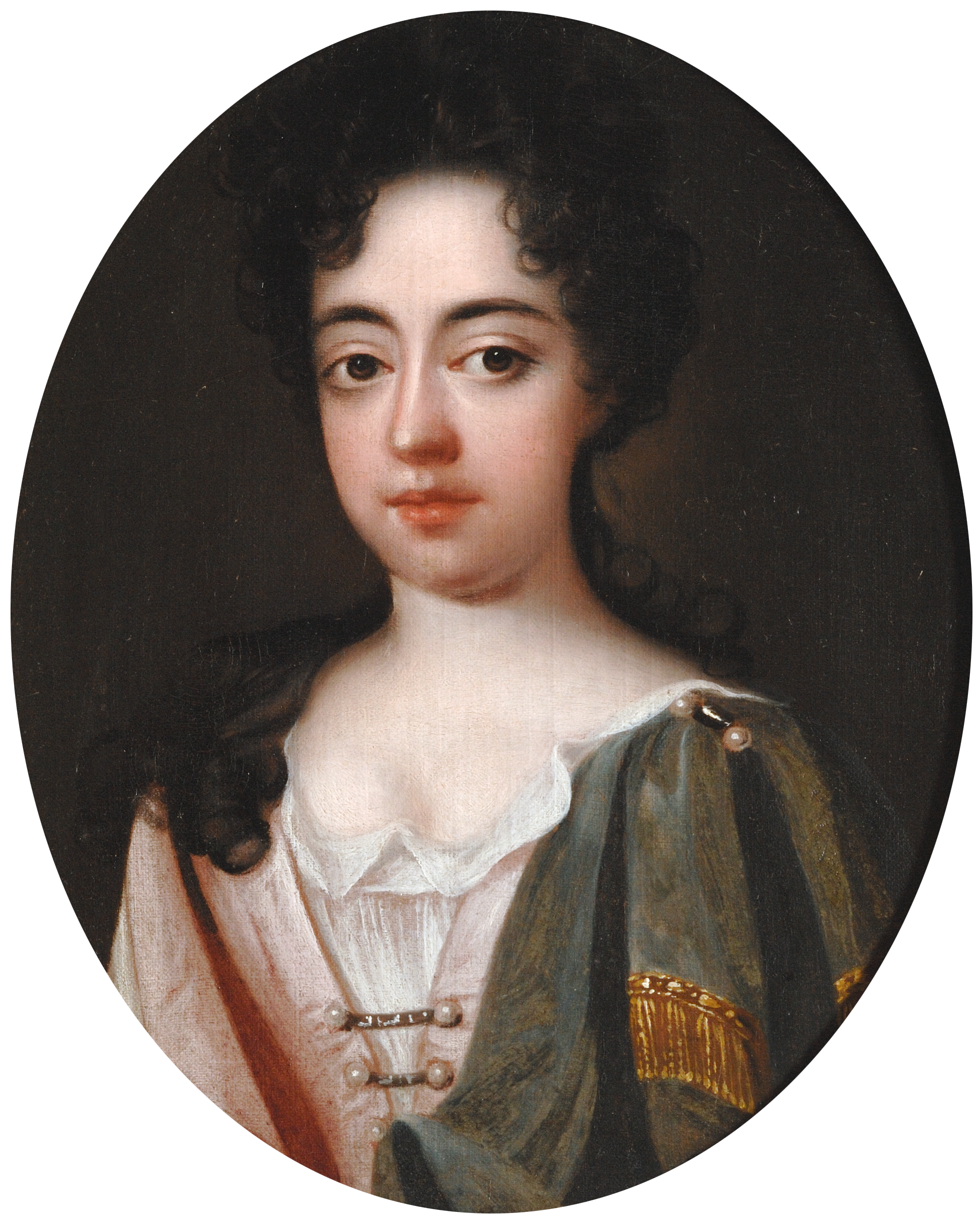27. Princess Louisa Maria Theresa Stuart, by an unknown artist
 Louisa Maria Theresa Stuart, unknown artist, H 35.6 x W 28.6 cm, oil on canvas, early 18th century
Louisa Maria Theresa Stuart, unknown artist, H 35.6 x W 28.6 cm, oil on canvas, early 18th century
The serious and slightly sad girl who looks at us from
this portrait is Princess Louisa Maria Theresa Stuart, the daughter of (by then
exiled) King James (II of England and VII of Scotland) and his queen Mary of
Modena, and the sister of the ‘Old Pretender’. She was born in 1692 at St
Germain-en-Laye, where James II was given refuge by Louis XIV, and was (in the
words of W.A. Speck in the Oxford DNB) living as a ‘virtual recluse’ after his
defeat in the battle of the Boyne, but, as this portrait shows, still very much
in royal style. Her life was short – she died of smallpox in 1712, and it is
difficult to look at her without thinking of that, particularly while the world
is still gripped by the pandemic.
The exiled court was still closely linked to
Versailles, and Louisa Maria quickly joined the French court scene. Madame
de Maintenon, Louis XIV’s (not quite so) secret wife,
refers to the small princess many times in her correspondence. For her, she was
‘her mother’s friend and chief comforter, truly cheerful, affable, and anxious
to please, attached to her duties and fulfilling them without a murmur’. On
another occasion, Madame de Maintenon wrote to Sophia of Hanover,
when Louisa Maria was just four years old: ‘The princess will have a pretty
figure. She does not talk much and does not understand French. In face she
resembles her mother, but her eyes are more beautiful than the Queen’s. She is
as sweet and gentle as a lamb.’
A number of portraits of Louisa Maria by French
artists, of whom ours must be one, reflect her position at the French court
society. Her changing image as she was growing up is superbly discussed
in John Kerslake’s 1977 catalogue of Early Georgian Portraits
in the National Portrait Gallery. Our portrait is definitely much later than the
charming depiction of her with her elder brother painted in 1695 by Nicolas de
Largillière, and perhaps contemporary with or
slightly earlier then the
portrait attributed to Alex Simon Belle at the National Portrait Gallery
(which may be the same as he exhibited at the Salon of 1704). It is difficult
to be more specific than that. The 1929 catalogue of college pictures
attributes it to the school of Pierre
Mignard, and the similarities are not difficult to see,
notably in his portrayal of children (see, for example, this group
portrait at the Laing Art Gallery on Art UK). As Mignard
died in 1695, and this portrait is arguably about a decade later, though,
further precision is not possible at the moment.
How this portrait got from France to England and came
to be in the college’s collection is far from clear either. Rachael Lane Poole
was unable to identify any trace of the portrait in eighteenth-century college
catalogues, and yet it has undoubtedly been here for a long time, quite
possibly since the eighteenth century indeed. The speculation that it may have
been identical with the portrait acquired by President Holmes and identified
then as the ‘Duchess of Queensberry’, does not seem to have any foundation. If
the famous contemporary of Holmes, Catherine
Hyde, the wife of the 3rd duke, was meant, the
confusion between the two seems quite improbable. Are we dealing with the
clandestine Jacobitism of Oxford Tories? Eighteenth-century Oxford was famously
the home of lost political causes and only gradually came to accommodation with
‘the illustrious House of Hanover and Protestant succession’ (see for example
W.R. Ward, Georgian Oxford: University
Politics in the Eighteenth Century, Oxford 1958). This might be an example
of that at St John’s, in line with the attachment to Charles I, or it might be
later collecting habits of the Victorian age. At any rate, the College also
owns a very considerable collection of engravings of the members of the House
of Stuart.
What is arguably even more interesting is the
depiction of childhood in the portrait. The extremely influential – and at the
same time often severely criticized – argument of the famous French historian
Philippe Ariès in his Centuries of
Childhood: A Social History of Childhood (1960) posits the ‘invention of
childhood’ happening in the Ancien Régime period, a transition from treating
children as miniature adults to considering childhood as a fundamentally
distinct period of human life. Much of his evidence comes precisely from the
portrait painting (some critics would say that he relied on it far too much for
social attitudes). Some difficulty we might have in identifying the exact age
of the Princess is as characteristic of this transitional period in the
treatment of children, as is Madame de Maintenon’s amusement at the four-year
old being firmly set on marriage with the Duc de Bourgogne, or her admiration
for the beauty of Maria Louisa’s eyes, so prominent in this portrait. It could
not have been easy for this exiled princess, part of the French court and yet
not part of it, still a child, and yet with so many adult expectations already
upon her.
View
the painting on Art UK here.
 Dr Georgy Kantor, Tutorial Fellow in Ancient History and Keeper of the Pictures
Dr Georgy Kantor, Tutorial Fellow in Ancient History and Keeper of the Pictures